The Best Fruit Trees to Plant in Your Garden
Published: August 29, 2025 at 8:05:58 AM UTC
Last updated: December 13, 2025 at 11:27:43 AM UTC
Transforming your garden into a thriving orchard brings countless rewards - from the joy of watching blossoms unfurl in spring to harvesting your own fresh, organic fruit. Beyond the practical benefit of having nutritious produce steps from your kitchen, fruit trees add beauty, structure, and habitat for beneficial wildlife to your outdoor space. Whether you have a sprawling backyard or just a small corner to spare, there's a fruit tree that can flourish in your garden. This guide will help you navigate the exciting world of home orcharding, with expert advice on selecting the perfect trees for your specific conditions.
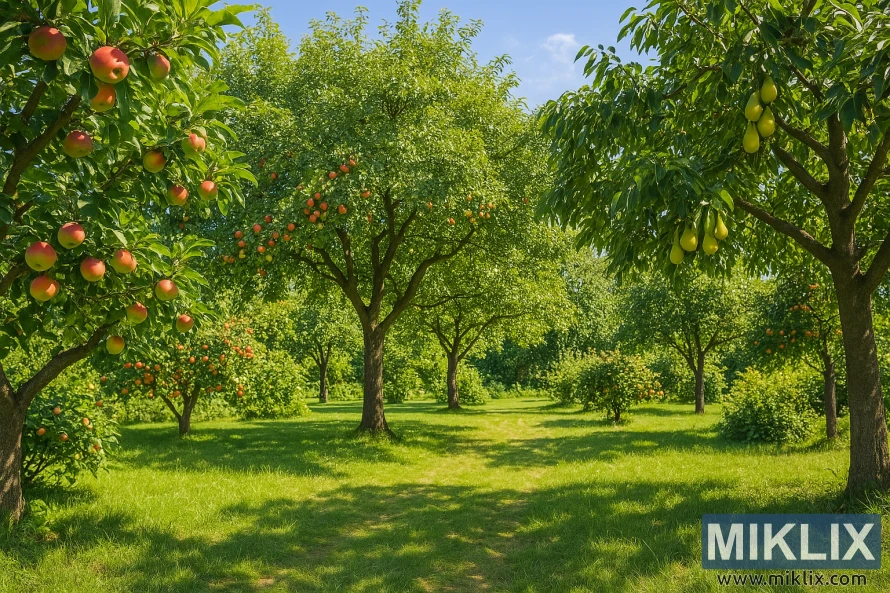
Key Considerations Before Planting Fruit Trees
Before you rush to plant fruit trees in your garden, take time to evaluate several important factors that will determine your success. The right tree in the right place will reward you with years of abundant harvests.
Climate Compatibility
Every fruit tree has specific climate requirements to produce well. Check your USDA hardiness zone and select varieties that thrive in your region. Many fruit trees need a certain number of "chill hours" (time spent below 45°F) to set fruit properly.
Space Requirements
Consider the mature size of your chosen trees. Standard-sized apple trees can reach 20-25 feet tall, while dwarf varieties might grow to just 8-10 feet. Ensure you have adequate spacing between trees for good air circulation and access for harvesting.
Soil Conditions
Most fruit trees prefer well-draining soil with a slightly acidic to neutral pH (6.0-7.0). Before planting, test your soil to determine its composition and pH level. Amend heavy clay or sandy soils with organic matter to improve drainage and fertility.
Pollination Needs
Many fruit trees require cross-pollination from another compatible variety to produce fruit. Self-fertile varieties can produce fruit on their own but often yield better with a pollination partner. Research the specific requirements for your chosen varieties.
The Best Fruit Trees to Plant in Your Garden
Based on ease of care, adaptability, and productivity, here are our top recommendations for home garden fruit trees. We've included options suitable for various climates and space constraints.
1. Apple Trees (Malus domestica)
Growing Zones:
Zones 3-8 (variety dependent)
Care Requirements:
- Full sun (6+ hours daily)
- Well-draining soil
- Regular watering during establishment
- Annual pruning in late winter
Harvest Timeline:
2-5 years to first fruit; harvest from late summer through fall depending on variety
Recommended Varieties:
- 'Honeycrisp' - exceptional flavor, cold-hardy
- 'Fuji' - sweet, crisp, good keeper
- 'Liberty' - disease-resistant, great for beginners
- 'Gala' - early producer, kid-friendly sweet taste
Special Notes:
Most apple trees need a compatible pollinator variety nearby. Consider dwarf rootstocks (M9, M26) for smaller gardens, which keep trees under 10 feet tall while producing full-sized fruit.
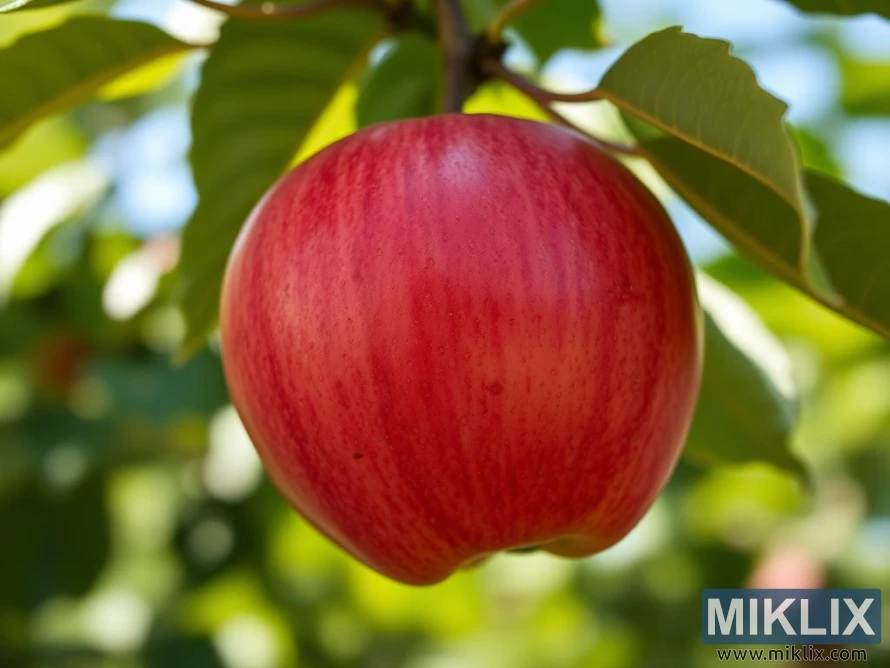
2. Pear Trees (Pyrus communis)
Growing Zones:
Zones 4-9 (variety dependent)
Care Requirements:
- Full sun (6+ hours daily)
- Well-draining soil
- Moderate watering
- Less pruning required than apples
Harvest Timeline:
3-5 years to first fruit; harvest in late summer to fall
Recommended Varieties:
- 'Bartlett' - classic flavor, productive
- 'Kieffer' - disease-resistant, heat-tolerant
- 'Seckel' - small, sweet fruits, excellent for small gardens
- 'Concorde' - self-fertile, excellent flavor
Special Notes:
Pear trees are generally more disease-resistant than apples, making them excellent choices for organic gardeners. Asian pear varieties offer a crisp, apple-like texture with distinctive pear flavor.
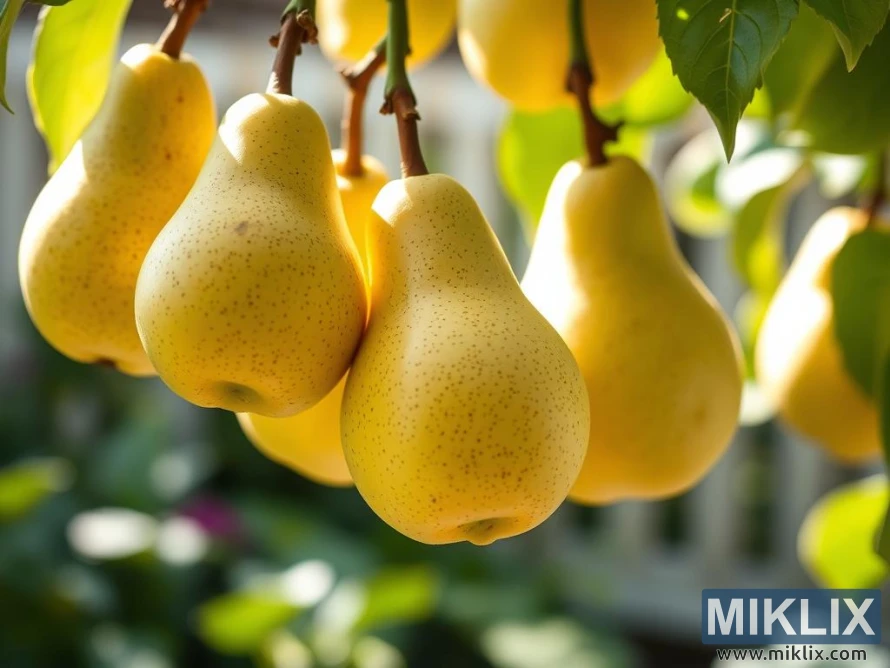
3. Fig Trees (Ficus carica)
Growing Zones:
Zones 7-10; some varieties can survive in Zone 6 with protection
Care Requirements:
- Full sun (6+ hours daily)
- Well-draining soil
- Drought-tolerant once established
- Minimal pruning needed
Harvest Timeline:
1-2 years to first fruit; harvest in summer and sometimes fall (two crops per year in warm climates)
Recommended Varieties:
- 'Brown Turkey' - cold-hardy, reliable producer
- 'Chicago Hardy' - survives to Zone 5 with protection
- 'Celeste' - sweet, compact growth habit
- 'Kadota' - honey-flavored green fruits
Special Notes:
Fig trees are self-fertile and don't require a pollinator. They're excellent for container growing in colder regions, where they can be moved to protected areas in winter. Their attractive foliage makes them ornamental as well as productive.
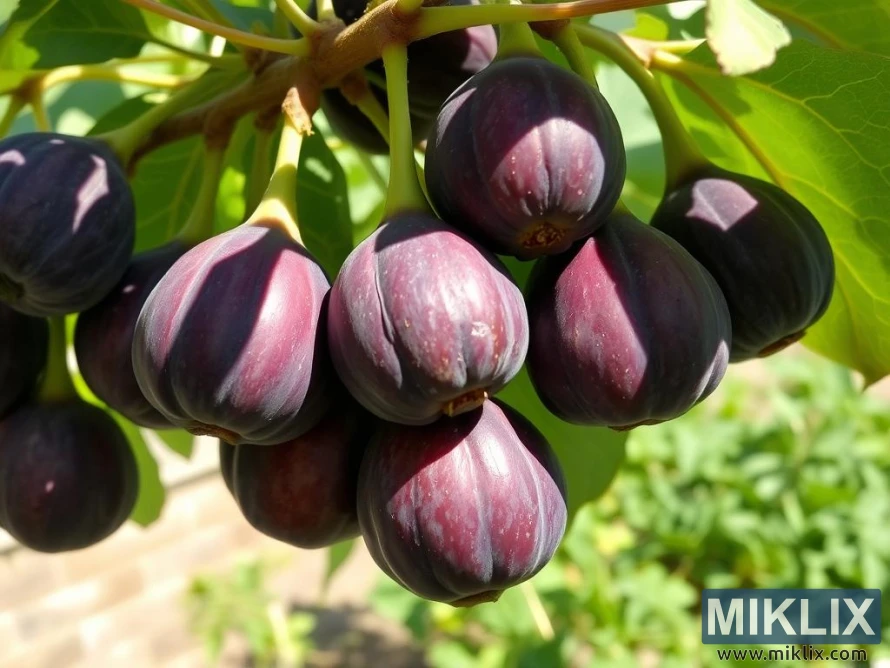
4. Cherry Trees (Prunus avium for sweet, P. cerasus for sour)
Growing Zones:
Zones 4-9 (sweet cherries); Zones 3-8 (sour cherries)
Care Requirements:
- Full sun (6+ hours daily)
- Well-draining soil
- Regular watering
- Pruning for air circulation
Harvest Timeline:
3-5 years to first fruit; harvest in early to mid-summer
Recommended Varieties:
- 'Stella' - self-fertile sweet cherry
- 'Montmorency' - classic sour cherry for pies
- 'Lapins' - self-fertile, crack-resistant
- 'North Star' - dwarf sour cherry, perfect for small spaces
Special Notes:
Sweet cherries typically need a pollinator, while most sour cherries are self-fertile. Bird netting is essential to protect your harvest. Dwarf rootstocks like Gisela 5 keep trees manageable at 8-10 feet tall.

5. Peach Trees (Prunus persica)
Growing Zones:
Zones 5-9 (some varieties to Zone 4)
Care Requirements:
- Full sun (6+ hours daily)
- Well-draining soil
- Regular watering
- Annual pruning for productivity
Harvest Timeline:
2-4 years to first fruit; harvest in mid to late summer
Recommended Varieties:
- 'Reliance' - extremely cold-hardy
- 'Contender' - disease-resistant, flavorful
- 'Elberta' - classic freestone peach
- 'Frost' - resistant to peach leaf curl
Special Notes:
Most peach trees are self-fertile, making them ideal for small gardens where only one tree can be accommodated. They benefit from protection from late spring frosts that can damage blossoms. Genetic dwarf varieties stay under 6 feet tall.

Essential Planting Tips for Fruit Trees
Proper planting is crucial for the long-term health and productivity of your fruit trees. Follow these steps to give your trees the best possible start.
When to Plant
The ideal time to plant fruit trees is during the dormant season – in late fall after leaf drop or in early spring before bud break. This gives trees time to establish roots before the demands of growth or fruiting.
Preparing the Site
Choose a location with full sun and good air circulation. Dig a hole twice as wide as the root ball but only as deep as the root ball's height. Loosen the soil around the sides of the hole to allow roots to penetrate easily.
Planting Depth
Position the tree so the graft union (the swollen area on the trunk) remains 2-3 inches above soil level. Planting too deep can cause the scion to root, defeating the purpose of the dwarfing rootstock.
Watering
Water thoroughly after planting, providing about 5 gallons per tree. Create a slight basin around the tree to help hold water. During the first growing season, water deeply once a week if rainfall is insufficient.
Mulching
Apply a 2-3 inch layer of organic mulch in a circle around the tree, keeping it 3-4 inches away from the trunk. This conserves moisture, suppresses weeds, and gradually improves soil as it breaks down.
Staking
Dwarf and semi-dwarf trees may need staking for the first 1-2 years. Use a stake positioned on the windward side and attach the tree with flexible tree ties that won't damage the bark.
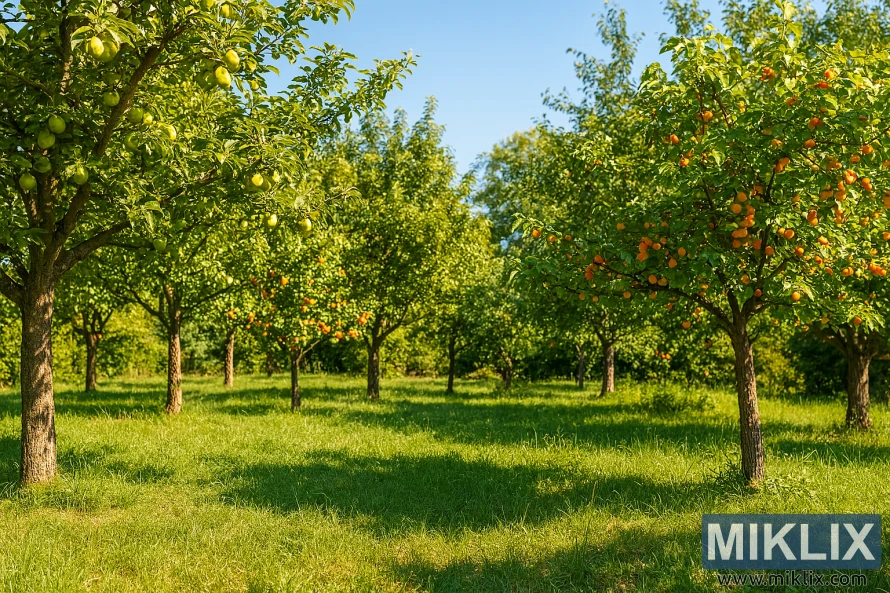
Fruit Tree Maintenance and Problem Solving
Proper maintenance is key to keeping your fruit trees healthy and productive for many years. Here's how to address common challenges and keep your trees thriving.
Pruning Basics
Prune fruit trees during dormancy (winter to early spring) to establish strong structure and improve air circulation. Remove dead, diseased, or crossing branches first. For most fruit trees, aim for an open center or modified central leader form.
Fertilizing
Apply a balanced organic fertilizer in early spring before bud break. Young trees benefit from fertilizer with higher nitrogen content, while established trees need more phosphorus and potassium to support fruit production.
Pest Management
Monitor trees regularly for signs of pests. Encourage beneficial insects by planting flowers nearby. Consider organic controls like neem oil, insecticidal soap, or horticultural oil for common pests like aphids, mites, and scale insects.
Disease Prevention
Many fruit tree diseases can be prevented with good air circulation, proper pruning, and orchard sanitation. Clean up fallen fruit and leaves promptly. Choose disease-resistant varieties when possible for your area's common problems.
Fruit Thinning
When trees set too much fruit, thin excess fruitlets to improve size and quality of remaining fruit. This also prevents branch breakage and helps maintain annual bearing in biennial varieties.
Winter Protection
In cold regions, protect young trees from winter damage by wrapping trunks with tree guards to prevent rodent damage and sunscald. For marginally hardy trees, consider using frost blankets during late spring freezes.
Common Fruit Tree Solutions
- Yellow leaves: Often indicates nitrogen deficiency or poor drainage
- Fruit drop: Usually caused by over-production, drought stress, or pollination issues
- Cracked fruit: Result of uneven watering; maintain consistent moisture
- No fruit production: Check pollination requirements and ensure adequate chill hours
When to Seek Expert Help
- Oozing sap or cankers on branches or trunk
- Severe leaf curl or discoloration that persists despite treatment
- Sudden wilting of entire branches
- Significant bark damage or signs of borers
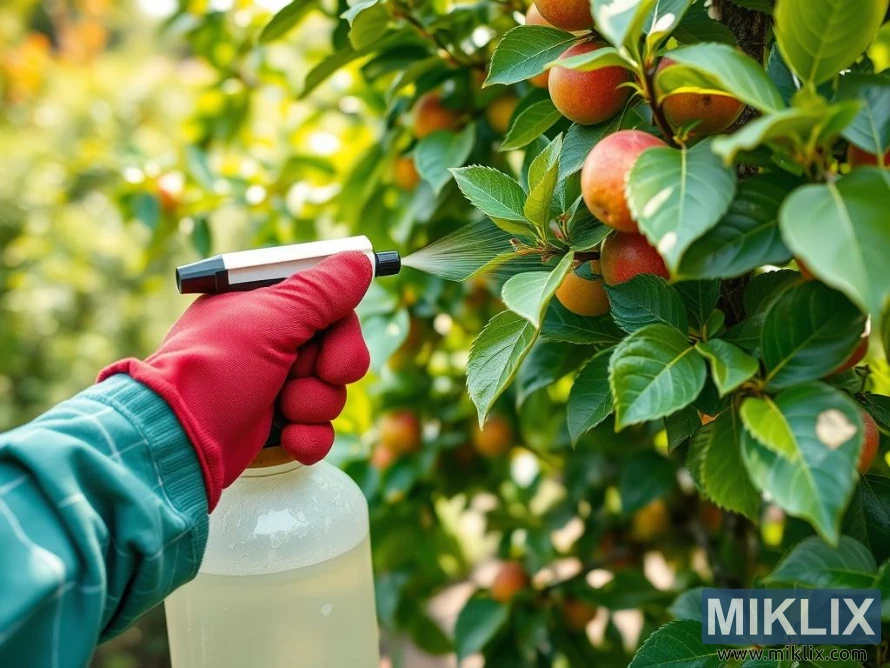
Growing Fruit Trees in Containers
Limited space doesn't mean you can't enjoy homegrown fruit. Many fruit trees thrive in containers, making them perfect for patios, balconies, or small yards.
Best Trees for Containers
- Dwarf apple varieties on M27 or M9 rootstock
- Genetic dwarf peaches and nectarines
- Fig trees (naturally compact varieties)
- Dwarf citrus (Meyer lemon, kumquat, calamondin)
- Columnar apple trees
Container Selection
Choose containers at least 18-24 inches in diameter and depth. Ensure adequate drainage holes. Half-barrels, large ceramic pots, or fabric grow bags all work well. Dark-colored containers can overheat in full sun.
Potting Medium
Use a high-quality potting mix designed for containers, not garden soil. Add 20% compost for fertility and water retention. Some coarse material like perlite helps maintain good drainage.
Special Care Needs
Container trees need more frequent watering and fertilizing than ground-planted trees. Water when the top inch of soil feels dry. Apply liquid fertilizer monthly during the growing season. Repot every 2-3 years to refresh soil and provide room for root growth.

Additional Fruit Trees to Consider
Beyond the most common options, these fruit trees offer unique flavors and growing experiences that might be perfect for your garden.
Plum Trees
Zones 4-9, depending on variety
Plums offer incredible diversity, from sweet dessert types to tart cooking varieties. Many are self-fertile and relatively disease-resistant. European plums like 'Stanley' and Japanese plums like 'Methley' are excellent choices for beginners.
Apricot Trees
Zones 5-8, with protection
Apricots bloom early, so they're best in areas without late spring frosts. Self-fertile varieties like 'Moorpark' and cold-hardy options like 'Harcot' reward growers with delicious, sweet fruits that ripen in early summer.
Persimmon Trees
Zones 7-10 (Asian); Zones 4-9 (American)
Persimmons offer beautiful fall foliage and sweet fruits that ripen after leaf drop. American persimmons (Diospyros virginiana) are extremely cold-hardy, while Asian types (D. kaki) like 'Fuyu' produce larger, non-astringent fruits.
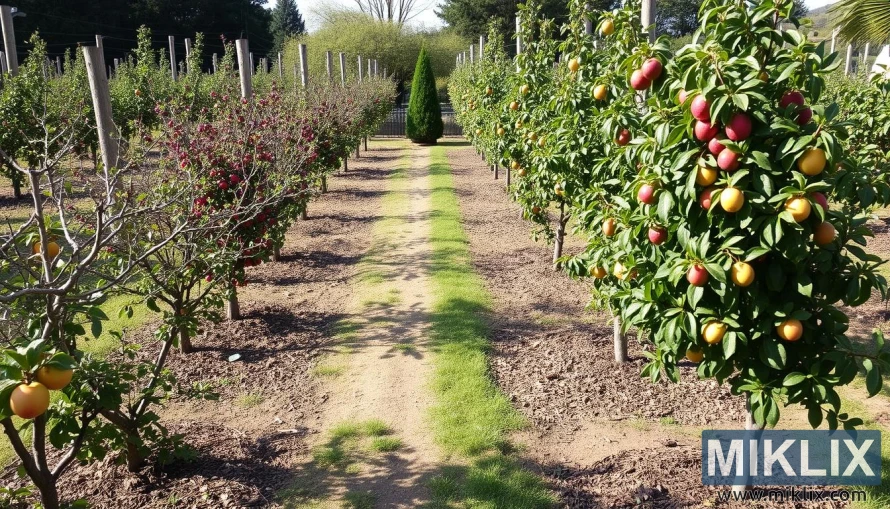
Conclusion
Growing fruit trees in your garden connects you to ancient agricultural traditions while providing fresh, nutritious food for your family. With proper planning and care, your trees will become a cherished part of your landscape, potentially outliving the gardener who planted them.
Remember that patience is key with fruit trees - the best time to plant was years ago, but the second-best time is today. Start with one or two trees that match your climate and space, then expand your home orchard as you gain confidence and experience.
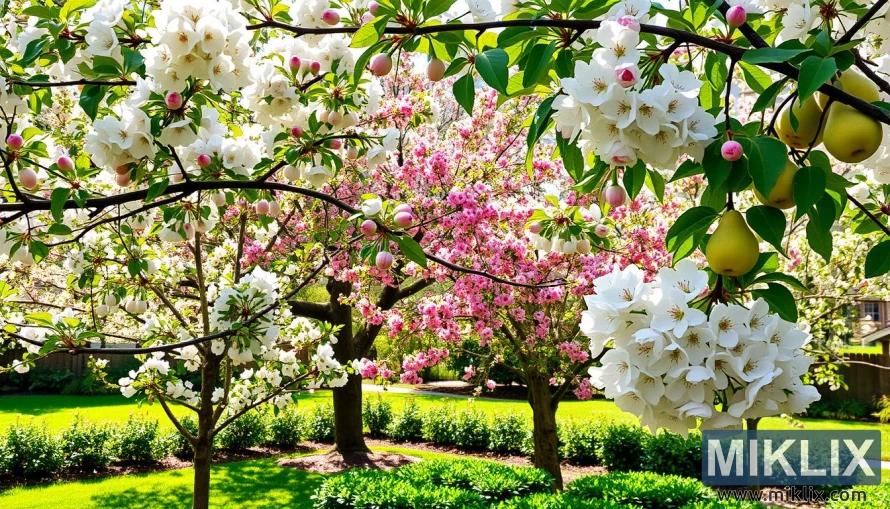
Further Reading
If you enjoyed this post, you may also like these suggestions:
- A Complete Guide to Growing Lemons at Home
- A Complete Guide to Growing Cauliflower in Your Home Garden
- Growing Persimmons: A Guide to Cultivating Sweet Success
